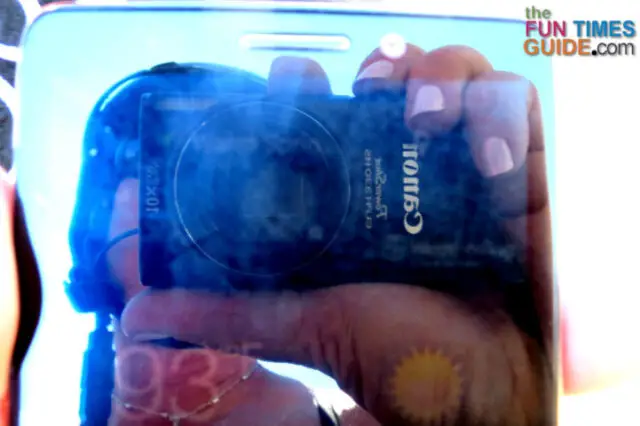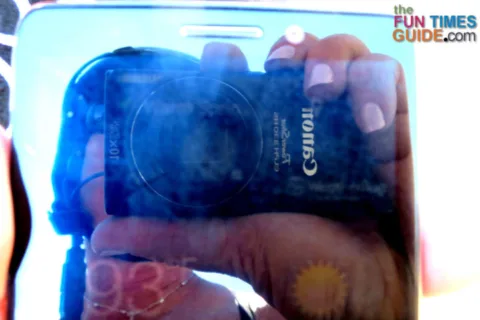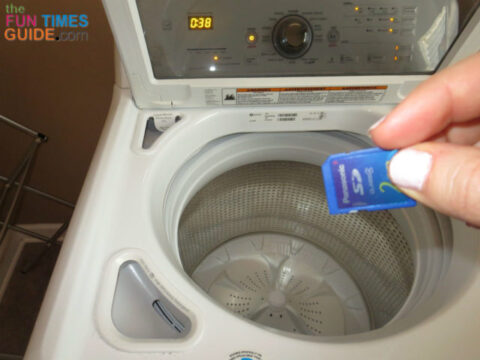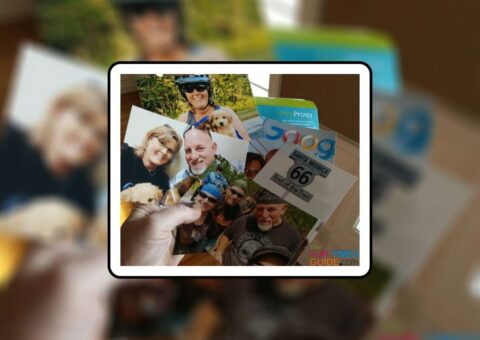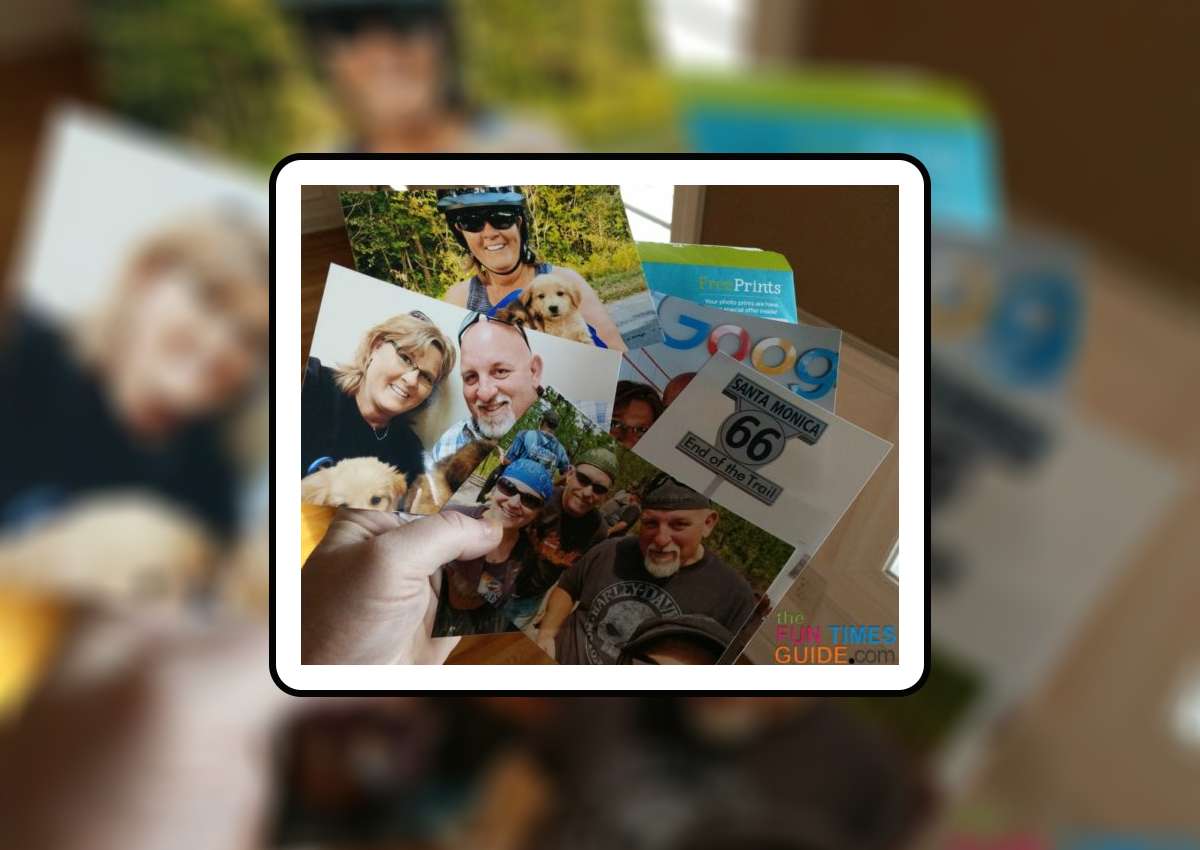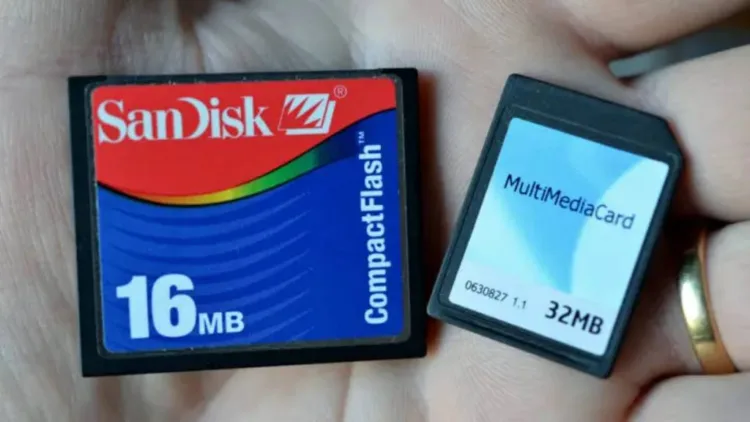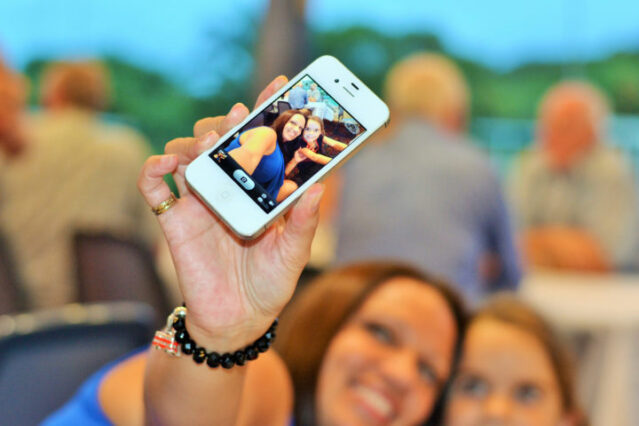If you begin to think of your digital camera as an instant, personalized photocopy machine, then anything you want to save for future viewing (either for yourself or to show someone else) can easily be stored and shared digitally.
It’s as simple as point & shoot!
Following are some fun ideas and outside the box ways to use your digital camera on a daily basis…
Unique Ways To Use A Digital Camera
First, keep in mind that you don’t always have to print out every single digital image you take, in order for it to be useful.
While 1/3rd of digital camera owners never print out their digital photos, 10% print every single image they keep! Source
As you’ll see with the following ideas, there are some times when you may want to print out a digital photo and carry it around with you, while there are other times that it may be smarter to simply store an image on the internal memory (or removable memory card) from your digital camera or camera phone — temporarily.
Once you begin to think of your camera’s own memory (or memory card) as a portable hard drive of sorts, then you’ll be able to start maximizing the use of your digital camera!
Digital cameras are far more than simply point-and-shoot cameras
Consider these unique uses for digital cameras:
#1 – Create A Household Inventory
In case of theft, fire, hurricane, tornado, tsunami, or some other cause for evacuation, it’s wise to photo inventory your belongings.
At the very least, you’ll want to store these on your computer’s hard drive. But the best means of assuring that your inventory remains safe is to burn 2 CDs — each filled with photos of your belongings. Keep one CD in your home, and the other at your office, in a bank deposit box, etc.
For electronics, you want to record model numbers and serial numbers. For unusual/valuable items such as jewelry, art, antiques & other collections, remember to photograph written descriptions and copies of appraisals.
TIP: For advanced users who also have a website, you could also store your household inventory photos on a page that’s not accessed by anyone on your own website.
#2 – Digitally Preserve Items That Will Fade Or Go Away
Timely materials all lend themselves to being photographed and preserved, like:
- Newspaper headlines and front page photos that are meaningful to you
- Valuable reports and projects you’ve done
- Crafty items you’ve made (before giving them away or selling them)
- An ongoing problem you’re trying to resolve with a landlord or someone else
TIP: Say you’re looking through a magazine at the doctor’s office or somewhere, and you see something you like (maybe an example of how to make wreaths, how to choose the right paint for your walls, some recommended websites to find great homeschooling info, a picture of some garage shelves that would work well in your house) — just photograph it. The magazine is not yours to keep, but your digital image of something you saw inside is!
#3 – Create A “Wish List” Or Shopping List
By photographing items you’ve seen (at someone’s home or in stores) and hope to someday buy — or make — yourself, you’ll have some ideas on hand when you’re eventually need to buy/make that item.
I’ve also taken this a step farther by photographing a few different sets of luggage I saw in stores, then showing the photos to my husband. Together, we were able to narrow down our choices at home and make a joint decision — without him having to actually step foot in a store.
I’ve used this idea for my everyday shopping list as well, so I’d know the exact model number of an item I needed to buy parts for — like printer ink cartridges or HVAC air filters.
#4 – Photograph Important Rules & Safety Info
 Wherever you go, take the time to photograph important rules, phone numbers, or a list of “who to contact in case of emergency” — just in case.
Wherever you go, take the time to photograph important rules, phone numbers, or a list of “who to contact in case of emergency” — just in case.
We utilized this theory recently when we were out 4-wheeling and got stuck. (See photo at right.)
After the 2nd hour of trying to free ourselves, we were ready to call the local forest ranger — whose number I had photographed at the entrance of this off-road park, just in case!
Whenever you’re visiting somewhere new, ask yourself, “Could this information possibly be useful to me later?” If so, take a picture of it!
#5 – Get Organized & Create “Sharable” Lists
If you take photos of lists that you use a lot — over and over — then you’ll know right where to look if there’s ever a question, or if you need to share that list with someone else.
Some lists that you might want to photograph:
- Doctors appointments
- Kids activities or family schedule
- Shopping lists
- To-do lists
#6 – Capture One-of-a-Kind Moments
Whether it be a car accident you’ve been involved in, someone famous walking down the street, or something you’ve seen that would be nearly impossible to explain to someone else… digital photographs can help you get your point across.
I call these my “glad I had my camera” moments!
For example, I recently photographed a strange bump on my forearm that was red and itchy. Just in case it didn’t go away on its own in a few days, I wanted to have something to show the doctor from Day One.
#7 – Take Pictures Of Things You Hope To Replicate
Whether these are things you’ve done before yourself, and hope to someday replicate, or things you’ve seen others do and you would like to try to replicate them yourself… a photo can be used as a guide to help you get the job done right.
For example, photograph any crafty items you’ve made (before giving them away or selling them), or novel things you’ve done (face painting before a sporting event). Then, the next time you wish to do the same thing again, you’ll have a guide.
Or, photograph things like hairstyles you like, or landscaping ideas that you may want to try in the future. Whether you see it in a magazine, on someone else, or when driving around town, simply photograph it and then create an “idea file” filled with examples of some things that you’ll like to try.
#8 – Take Pictures Before You Travel
I haven’t done this, but I know someone who has… photograph your luggage prior to boarding an airplane.
That way, if any of your luggage fails to arrive at the other end, you can show the folks at Lost Luggage what to look for when they start hunting for your missing luggage.
Your photo also shows the condition of your bag before you gave it to them — in the event that it arrives damaged when you eventually get it back.
You may also want to photograph the contents of your luggage — for insurance purposes — in case anything gets lost or stolen during your trip.
#9 – Lighten The Load In Your Wallet
I take pictures of my membership cards and store reward cards — so I don’t have to carry all those cards around everywhere.
If the company has an app (so you can just show the cashier your phone each time), then I don’t waste time photographing those.
And if I know that a particular store will just look up your card number when you give them your telephone number (like Kroger, CVS, Walgreens, Kohls, etc.), then I don’t photograph those either.
Hotel reward cards (like Best Western) and cards that give discounts at more than one location (like AARP) are the ones that I photograph the most — because we travel on our motorcycle a lot (and we stay at a lot of hotels and use a lot of discounts), and it’s not convenient to carry all of the individual cards when space is limited.
I’ve also saved a digital photo of our health insurance card, so that I always have it with us. Trust me, that has come in handy… more than once! (Can you say out of town Emergency Room visits?)
Here are more ways to replace your wallet with your phone.
TIP: If you have trouble remembering the login usernames and passwords for all your apps, and you get frustrated having to remember them on the spot, then just take a screenshot of the app screen that shows your member id and/or barcode. Show that to the cashier instead. (It’s stored in your phone’s photo gallery. I put all of mine in a specific album.) They can’t tell it’s not actually the app they’re looking at.
#10 – Take Pictures of Pictures
I do this one all the time: photograph old family photos.
For example, Jim’s parents have a lot of old black & whites, and some photos of Jim when he was a baby that I’d love to have, but I don’t want to take their only copy. Of course there are no negatives for these old photos, so I simply photograph them!
TIP: Make sure you have plenty of natural light shining into the room, and try to photograph the pictures head-on, rather than from an angle. They’ll look more “real” when used in your scrapbooks, etc. if they’re shot straight-on. For some of the ones I’ve taken, you can barely tell that it’s a picture of a picture. For others, if the angle is off even the slightest bit, then it looks a bit distorted and it’s obviously a picture of a picture.
Must read: 49 Brilliant Uses For Your Smartphone’s Camera
I'm a Photographer who's been documenting every moment of my life in pictures… for decades! I currently have 171,285 photos saved in 6,034 albums online (backed up in 3 different locations). Pet Photography and Travel Photography are my favorites — I'm always taking pictures of our dogs at home and of us on our multi-day motorcycle trips. When I'm not snapping photos, you can find me at the corner of Good News & Fun Times as publisher of The Fun Times Guide (32 fun & helpful websites).
